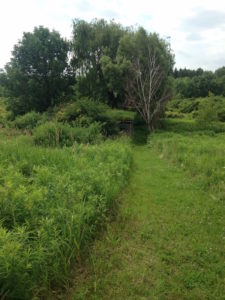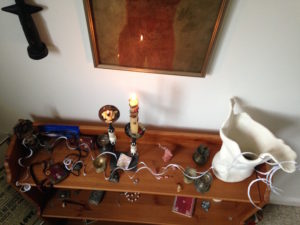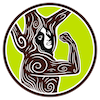Planning the Next Year in Our Regenerative Livelihoods
 UPDATE: This was written in 2016. Since then, I’ve taken my insights from years of this practice, and created a free mini-course on Regenerative, Reflective Planning. It’s in the Regenepreneurs Network, which supports folks who are on their path to discern their regenerative right livelihood. Click here to learn more about it.
UPDATE: This was written in 2016. Since then, I’ve taken my insights from years of this practice, and created a free mini-course on Regenerative, Reflective Planning. It’s in the Regenepreneurs Network, which supports folks who are on their path to discern their regenerative right livelihood. Click here to learn more about it.
In my last article, I shared one of my practices for the Solstice—the Threshold Walk. The second, and equally important part of my Solstice practice, is Reflective Planning. In this article, I’ll share a brief overview of my process for planning the upcoming year of my life and regenerative livelihood.
By the way, these practices can be adopted for your beliefs and calendar systems—for example, if you live by the Gregorian Calendar, January 1 is a great time for a Threshold Walk outdoors and for planning your year. Or you can celebrate the new year of your faith tradition with the same process.
First of all, let’s explore liminality.
“In anthropology, liminality (from the Latin word līmen, meaning “a threshold”) is the quality of ambiguity or disorientation that occurs in the middle stage of rituals, when participants no longer hold their pre-ritual status but have not yet begun the transition to the status they will hold when the ritual is complete. During a ritual’s liminal stage, participants ‘stand at the threshold’ between their previous way of structuring their identity, time, or community, and a new way, which the ritual establishes.” -Wikipedia

The Threshold Walk is potent specifically because it allows us to consciously cultivate ritual, liminal space—after we cross the threshold, we are no longer our “usual” selves—thus not bound by our usual limits. Instead, we see Gaia as a mirror supporting us to reflect on the big questions in our lives. We can access wisdom that wouldn’t have been otherwise available to us. We can allow ourselves to be changed by this, and re-emerge into our lives with new insights.
In addition, the Winter Solstice—precisely because it is a potent time in the Earth’s cycles between darkness and light, between what’s hibernating and what is about to emerge—is a threshold where endings and beginnings coexist.
The Summer Solstice is a time of fullness and also the almost imperceptible turn towards winter.

This combination of a Threshold Walk on the Solstice is powerful because we
- attune and align our cycles of reflection with those of our Earth;
- consciously cultivate liminal space where we step out of our lives and identities long enough to create openings for transformation.
These Earth-centering, power-gathering practices are a cornerstone of regenerative livelihoods, because they form a strong Earth- and Source-connected foundation upon which we reflect on our lives and work for the past year, and plan for the next.
In my experience, the key to a transformative retreat at any time of the year, is to cultivate its liminal nature. How can we create a container so that we feel outside of the usual demands and limits of our lives, and open to new wisdom? We will probably experience liminality in the Threshold Walk. But we also want to plan to create liminal space (where you can shed old roles and identities and embrace new ones) when we do the Reflective Planning.
To do this, we consciously design the flow of the day ahead of time.
To ensure that I have ample time and space, I schedule in my calendar the Solstices and Equinoxes as days when I go into retreat. This doesn’t have to mean that it has to be an expensive time away, though! When my children were young, this simply meant negotiating child care with my partner and communicating the importance that I should not be disturbed while spending the day in my home office.
 The day before the Solstice, I prepare by cleaning up my space and thinking about what I need in that space to make it feel sacred and transformative. Candles? An altar? A fresh notebook and pen? Particular music? I always put my calendars on my desk, because this is a planning retreat after all! I also think a bit about how I want to structure the next day—roughly how much time do I have? How will I bring closure at the end? Occasionally, I prepare food that I can enjoy on the Solstice without having to stop to cook (but if you are a person for whom cooking would feel like a sacred pause that heightens the liminal nature of your retreat, by all means, please do that!)
The day before the Solstice, I prepare by cleaning up my space and thinking about what I need in that space to make it feel sacred and transformative. Candles? An altar? A fresh notebook and pen? Particular music? I always put my calendars on my desk, because this is a planning retreat after all! I also think a bit about how I want to structure the next day—roughly how much time do I have? How will I bring closure at the end? Occasionally, I prepare food that I can enjoy on the Solstice without having to stop to cook (but if you are a person for whom cooking would feel like a sacred pause that heightens the liminal nature of your retreat, by all means, please do that!)
I also note at which point I will step out of my “real life” and into the liminal Reflective Planning phase. Depending on the weather, my energy, and how early I get up, I may do the outdoor Threshold Walk first to shift my mind to the liminal mindset. However, if I plan to walk later in the day and we are facing a busy family morning, I can start working on Reflective Planning after I cross my pre-appointed liminal threshold, which could be “when I close the door to my office,” or “after I light this candle.” This year, it was when I took off my apron after supporting Beloveds to get ready for school—I played music and danced and then opened up my journal.
The point is this: consciously choose a moment when you step out of your regular life and into your deeply reflective place, where you are totally free of daily obligations, where you are stepping into your power to be the agent of your own transformation.
Once we cross that threshold, we begin the Reflective Planning process. The realities below are the core of that work for me. Make sure to pace yourself so that you get to go through all three—there will be tension between giving yourself space to spend enough time on each part and making sure you complete all three AND enjoying your Threshold Walk—all in one day. Trust your process, dip into flow state, and then when you emerge, do a little time-keeping for yourself. You’ll be happy that you came full circle through the process.
Honor these realities:
What is Present
This is an inventory of the past year. One can draw, write, sing or dance each of our successes, and the things we are grateful for this year. We do the same for the challenges we faced.
Sometimes I complete each list before starting on the other one; other times I fill out both lists as I look back to my calendar to jog my memory as I go through the year chronologically. Do whatever feels right for you! Just make sure you have some record of your process.
When done, spend time consciously giving gratitude for What is Present.
I do this by asking
What Can Be Honored?
This allows me to embrace both
- the “good” things, and really ground into feeling grateful/juicy/excited/content,
- and to create space to reflect on the growth available in even the most severe challenges. This has been key for me, as there has often been a lot of growth available even in very painful situations!
If you aren’t feeling ready to do this, go on to the next phase, and circle back to this later to see if the energies around the challenges shifts after asking…
What Can Be Released?
Looking back at what was hard about the past year, we ask ourselves: “What do I need to grieve, resolve, or let go of? Which blocks do I need to clear so that I can be free to step unencumbered into the next year?”
This is the time where I consciously ask myself “Where am I in denial?” and decide to look at those things. Uffda.
Some years, this takes the bulk of my Solstice retreat. One year, I wrote the things I needed to release on disappearing paper.





With the foundation of gratitude and release of what no longer serves us, we can then step into…
What Can Be?
This is the phase when we reflect on our aims for the new year. To begin, envision yourself 365 days into the future and looking back… What big events will take place this year that you want to prepare for? What would you want to say that you did (or didn’t do) that you were really proud of? What would really matter to you? Who do you need to be to manifest this?
“Wisdom consists in knowing one’s place in any given cycle, and what kinds of action (or restraint of action) are appropriate for that phase.” -Richard Heinberg
I often draw out the main themes that come up, and the aims I have associated with those. For me, in winter of 2016, the main themes this year were family, personal growth, and my livelihood.
Regarding the first two themes, there are two important events coming up in my life: I turn 50 in February and want to give that milestone the attention it deserves. Also, my elder daughter graduates in 2017, so my time with her is precious, and she will need support to fledge.
For our livelihoods, this is the perfect time to get clear on the Abundance that we need to receive from our work for the next year.
For me, this Abundance is in many forms, such as:
- new professional connections with awesome permie women,
- the women whom I can support to step into their audacious leadership in their livelihoods,
- professional capabilities that I want to hone or learn,
- the income or time-trade hours I need to earn,
- the viability and vitality that ripples out into the people and living systems around me through my work.
It is clear to me that I want to accomplish all this without overbooking myself (a pattern I chose to release!).
I took the time to think fresh about how to structure my programs and work towards these aims. I also laid out the nitty gritty numbers!. I then listed the discrete next steps that are necessary to undertake. Key here was reflecting on how I need to BE to do all this from a regenerative paradigm. What’s poignant and worth noting is that I’ve been struggling for weeks to figure out how to juggle all the competing demands (taking into account when my daughters are out of school, when I’m traveling for work; and my client’s schedules, and the time necessary to teach the material and support folks towards a transformation in their own livelihoods); and on this Solstice, it all fell into place! I got clarity about the duration and start dates for each program, and how my work fits into my life.
I want to highlight the importance of actually putting your next steps on your calendar—the day after this Winter Solstice, I filled out a calendar for my year (noting the big life events), and this I often use a software on my computer to track my projects. Include times for revisiting aims and tracking progress—I personally block off the Winter & Summer Solstices and both Equinoxes so that I have four retreats dedicated to liminal space for planning; but I also reconnect with and reevaluate my aims as part of my “strategic planning sessions” that I schedule each month.
As I brought my Solstice Retreat to a close, I used “putting things in order” as a way to bring closure to the day. I stored my materials in my Reflection Planning folder, and since I’ve done this for a few years now, I find that these have become treasured records of my journeys in my life and right livelihood.
A Closing Note:
I have no doubt that the breakthrough in structuring the timeframes for my programs happened for me because
- the ample outside and reflective time activated parts of my brain that were more creative than my default “get stuff done” mode, and
- I opened up new possibilities in myself by connecting with the sacred and creating liminal space.

This is brilliant and clear, and most especially very useful!! I am so grateful.
For many years, no matter where I was living, on New Years Day I would seek out the highest point in that area and write down the previous years high and low points and what I envisioned for the new year ahead of me! Many of those years involved tromping through heavy snow, sometimes with a folding chair, sometimes I sat on a stump, sometimes it was in a cemetery or sitting by a stream. Being alone in nature, peaceful and quiet has been a ritual that has always helped me feel renewed and inspired. Thank you Karryn for sharing your insight!
I love this!!! Such a powerful way and insight of dedicating time for my livelihood. Thank you and I look forward to this!
[…] To read the next blog that outlines a process for reflective planning for our lives as Regenepreneurs, click here. […]
Wonderfully sage advice! We so often race from day to day and never stop to witness the passing of time and the direction of our lives. Thanks for this concise “roadmap” of how to honor past, present and future!